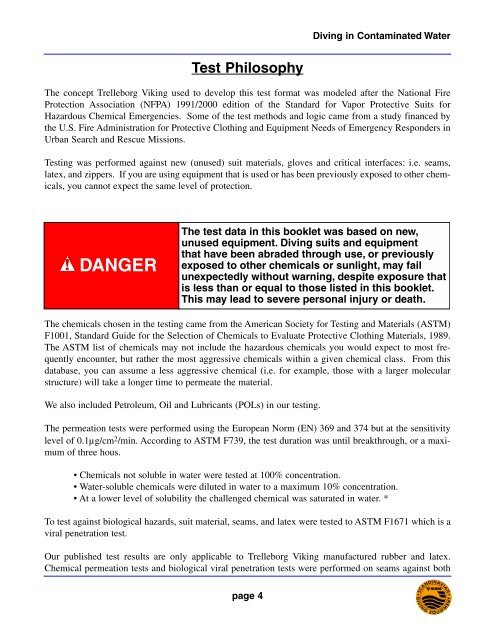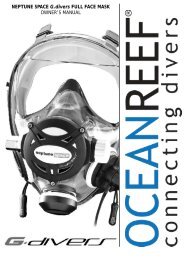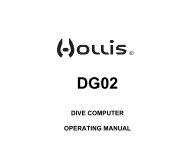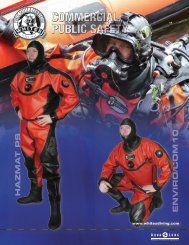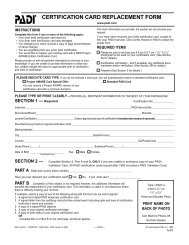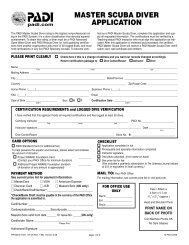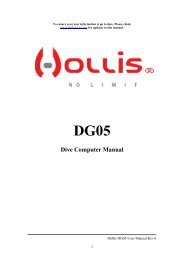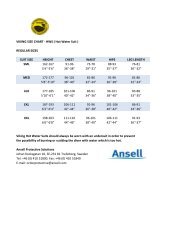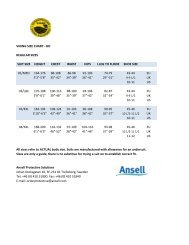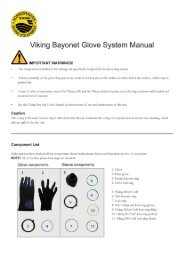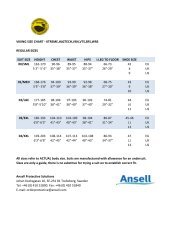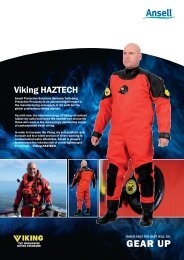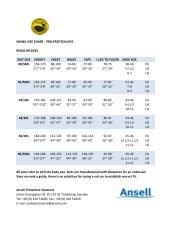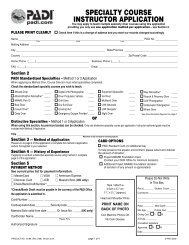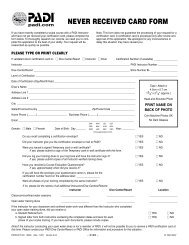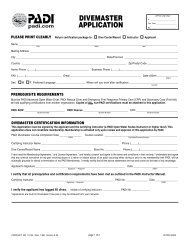Download - Scuba Center
Download - Scuba Center
Download - Scuba Center
You also want an ePaper? Increase the reach of your titles
YUMPU automatically turns print PDFs into web optimized ePapers that Google loves.
Diving in Contaminated Water<br />
Test Philosophy<br />
The concept Trelleborg Viking used to develop this test format was modeled after the National Fire<br />
Protection Association (NFPA) 1991/2000 edition of the Standard for Vapor Protective Suits for<br />
Hazardous Chemical Emergencies. Some of the test methods and logic came from a study financed by<br />
the U.S. Fire Administration for Protective Clothing and Equipment Needs of Emergency Responders in<br />
Urban Search and Rescue Missions.<br />
Testing was performed against new (unused) suit materials, gloves and critical interfaces: i.e. seams,<br />
latex, and zippers. If you are using equipment that is used or has been previously exposed to other chemicals,<br />
you cannot expect the same level of protection.<br />
!<br />
DANGER<br />
The test data in this booklet was based on new,<br />
unused equipment. Diving suits and equipment<br />
that have been abraded through use, or previously<br />
exposed to other chemicals or sunlight, may fail<br />
unexpectedly without warning, despite exposure that<br />
is less than or equal to those listed in this booklet.<br />
This may lead to severe personal injury or death.<br />
The chemicals chosen in the testing came from the American Society for Testing and Materials (ASTM)<br />
F1001, Standard Guide for the Selection of Chemicals to Evaluate Protective Clothing Materials, 1989.<br />
The ASTM list of chemicals may not include the hazardous chemicals you would expect to most frequently<br />
encounter, but rather the most aggressive chemicals within a given chemical class. From this<br />
database, you can assume a less aggressive chemical (i.e. for example, those with a larger molecular<br />
structure) will take a longer time to permeate the material.<br />
We also included Petroleum, Oil and Lubricants (POLs) in our testing.<br />
The permeation tests were performed using the European Norm (EN) 369 and 374 but at the sensitivity<br />
level of 0.1µg/cm 2 /min. According to ASTM F739, the test duration was until breakthrough, or a maximum<br />
of three hous.<br />
• Chemicals not soluble in water were tested at 100% concentration.<br />
• Water-soluble chemicals were diluted in water to a maximum 10% concentration.<br />
• At a lower level of solubility the challenged chemical was saturated in water. *<br />
To test against biological hazards, suit material, seams, and latex were tested to ASTM F1671 which is a<br />
viral penetration test.<br />
Our published test results are only applicable to Trelleborg Viking manufactured rubber and latex.<br />
Chemical permeation tests and biological viral penetration tests were performed on seams against both<br />
page 4


